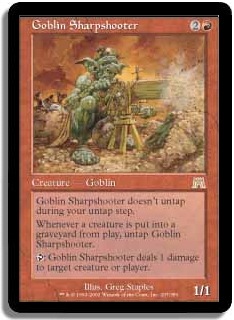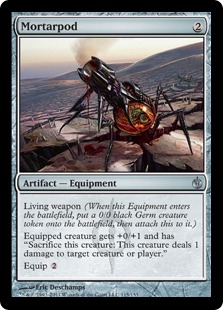When I did my review of Gatecrash’s flavor, I noted the modern (post-1850 in the Common Era) origins of several terms used in card names, among them Five-Alarm Fire, Gridlock, and Smog Elemental. The notion of a sprawling city, however, did not begin with the Industrial Age or even Renaissance times. Great metropolises of the past, such as Rome in the ancient West and the flourishing Chinese cities of Chang’an and later Kaifeng in the period corresponding to the Western Dark Ages, approached and possibly exceeded one million residents. (By comparison, only nine cities proper in the United States were estimated at or above the same figure in 2011.)
Magic: The Gathering has a wide range of settings and associated technology levels, which don’t necessarily correspond to popular conceptions of how advanced past civilizations were. Lost technologies such as the clockwork behind the Antikythera mechanism point to how fragile new discoveries could be in the face of war and social upheaval. The Romans had indoor plumbing and concrete. While the word steel evokes the Industrial Age at a minimum for most, both naturally occurring and human-made steel were in use in ancient and medieval times.
I briefly considered calling this article "Guns, Germs, and Steel," but that title was already taken. The first two items in the list, however, do illustrate the sides of Magic’s technology and its uneasy relationship with the Tolkienesque and Dungeons & Dragons style of fantasy from which it took its start: gunpowder weaponry predates the usual cutoffs for the beginning of the Renaissance in Western Europe, while the germ theory of disease is far newer in the history of science.
Guns and Cannons in Magic
Magic had a "gun environment" once: the island of Caliman, plane of Dominaria, the setting of Portal Second Age. It was a set for beginners…and also the first set to depict personal, handheld firearms as a regular part of the environment, messing with their expectations of Magic’s usual settings.
It’s amazing how three cards can sum up what went right and what went wrong with a setting. Portal Second Age was released in June 1998, before the style guide flipped from "weak" to "strong," and there doesn’t seem to have been much direction on which firearms to depict besides "make them look old," with old meaning different things to different people. Alaborn Musketeer is wielding a weapon that, though technically still a "long gun" because it is being fired from the shoulder, has an absurdly fat and short barrel. Vengeance’s gun has a much slimmer, longer, more "realistic" barrel. As for Trokin High Guard, I can’t imagine how that weapon would be fired from the shoulder (or fired at all!), so I’ll call it a handgun for lack of a better term.
Guns didn’t replace all other ranged weapons in Portal Second Age. The Norwood Archers use bows and arrows, for instance, much as warfare in the 1400s in Europe saw a mix of ranged weapons on the battlefield, from English longbows and crossbows to the early firearms known as "hand cannons." Alaborn Cavalier, reprinted in Knights vs. Dragons and source of confusion to those who’d never seen Portal Second Age, looks like a mashup of the plate-armored knight of Western Europe and the janissaries of the Ottoman Empire immediately after their adoption of horse-mounted firearm combat. In a Late Middle Ages or early Renaissance context, firearms make sense, and if Magic were to visit a setting modeled after China about 1200 C.E., gunpowder weapons would be truer to history than their lack.
Of course, truth to history is one of the least virtues in creative work, no matter how much it might bug folks like me. The players who loved Magic then—and the potential customers Wizards of the Coast wanted to lure—had a broadly negative reaction to guns getting mixed with their Magical fantasy. It’s not as if fantasy gun control is a hard-and-fast rule—Warhammer and World of Warcraft do it in medieval-styled fantasy, while urban fantasy set in modern-day cities has to be comfortable with personal firearms, licit or otherwise. Military fantasy goes a step further and relishes the interplay; one of my favorite fiction-reading fixes of the past year, Myke Cole‘s Shadow Ops series, imagines a U.S. Army containing Sorcerers who are equally lethal with 21st-century firearms and fire magic.
Even so, the customers spoke, and it’s thoroughly ingrained at Wizards that firearms and Magic: The Gathering do not mix. Even on Innistrad, a plane inspired by 18th-century Prussia and populated by werewolves begging to get killed by silver bullets, the Wizards heads of Design and Creative came down firmly in the "no" camp.
Brady Dommermuth (Creative) gave a twofold answer: "(1) Guns do alienate some (not all) fantasy fans, as well learned from Portal Second Age. (2) I didn’t want to be accused of becoming more like WoW."
Mark Rosewater (Design) put it more simply: "I’m not a fan of guns in Magic. Guns feel too modern to me."
There is one interesting waiver to the "no guns" rule, however. Goblins get to do whatever they want. In an early "Taste the Magic" column, Matt Cavotta reprinted part of the Mirrodin style guide. After a long list of no-nos for the metal world—robots, androids, rivets, pretty much anything "industrial"—there’s this parenthetical gem at the end: "(Clockwork and goblin technology are exceptions.)"
How big is the exception? Richard Garfield created a card with the playtest name of "Goblin Gatling Gunner," which evolved into Goblin Sharpshooter. The emphasis was on gun all the way through, right down to the art description given by Randy Buehler: "Exhausted Goblin turning the crank on a very primitive looking chain gun. The chain gun should fire gravel or slivers of wood."
There’s something vaguely Flintstones about the whole setup, and it’s ironic that the same goblins who get hit with flavor text like that on Rummaging Goblin also are the only ones allowed grenades, Gatling-type guns, and Fodder Cannons (the last technology they share with orcs). The notion of a Rocket Launcher as part of regular Magic, though, like the set in which that card made its debut, is an antiquity.
Germ Theory
On the flipside of firearms, which don’t jibe with Magic despite belonging in the Late Middle Ages, the germ theory of disease is part-and-parcel of certain Magic settings despite being discovered much later than gunpowder. How much later? The typical 18th-century doctor, especially a plague doctor, was operating on miasma theory, the idea that "bad air" caused disease, not bacteria and viruses and so on, and gambling that a bunch of rose petals stuffed in front of his nose would save him from the plague while he attended victims. Germ theory proper didn’t develop until the 19th century.
The creator of the Phyrexians, Yawgmoth, originally was a healer who got too wrapped up in studying victims of disease rather than saving them. On the artificial plane of Phyrexia, with no one able to fight off his vision of life forms remade into killing bio-machines, he created a twisted and partly self-replicating army of invaders. While Yawgmoth was defeated in the storyline of the Invasion block, Phyrexians and Phyresis were not completely.
The metal world of Argentum, created by Phyrexian-fighting-golem-turned-planeswalker Karn, was tainted by a few drops of Phyrexian oil. This taint grew into the corruption that created Mirrodin—it drove Memnarch insane, causing him to trap beings from other worlds and drag them to the metal world—eventually developing into the full blossoming of a New Phyrexia that owes its existence to Yawgmoth but has no allegiance to him.
Notions of contagion date to the Renaissance at the earliest (see miasma theory above), and germ theory came after contagion as a concept. While Contagion was an Alliances card, Contagion Clasp and Contagion Engine belong to Scars of Mirrodin, and the sheer stacking of medical language and imagery turned to dark purposes in cards such as Instill Infection and Vedalken Anatomist evokes the feel of "Modern! Science! I will control the future!" that slopped across Earth in the 19th and 20th centuries—think the devastation wrought by scientific racism.
For all their stomach-turning properties, the New Phyrexians likely have the most advanced non-magical biological understanding in the Multiverse; if anyone is going to have knowledge of germs, much less the idea to stuff them into living weapons like Mortarpod, they’re the ones.
If gunpowder weapons don’t get a pass in Magic, though, why do Phyrexians and their knowledge of germs get the okay? The best of my theories is that germs are naturally occurring while gunpowder is an invented item, and Magic is more amenable to singular figures like mages manipulating the environment than "leveling weapons" like firearms (see Vengeance’s quote about a bullet making all sizes equal). Further, biological warfare not only dates back earlier than gunpowder—Adrienne Mayor’s Greek Fire, Poison Arrows, & Scorpion Bombscovers this history well—but it also has been spread more widely in the popular consciousness.
Think about how many "medieval siege" scenes you’ve encountered in reading and watching fiction and how plague-bearing corpses are forever going over the walls. That didn’t happen nearly as often in real life as it did in fiction, but it did happen; catapulted dead bodies are more memorable than crude early firearms. Depictions of pasts, real or not, do shape what we expect the past should have been regardless of what it was. Warfare in Europe in the 1300s involved both early firearms and catapulted corpses. In both cases, nobody knew the science behind them, either chemistry or biology; yet repetition of preferences, rather than the truth of history, has put biological warfare into the "medieval" pasts that dominate most fantasy, including Magic, and kept firearms out.
I hope you’ve enjoyed this look at Magic’s settings and their often-awkward balancing act between technology and the game’s namesake. I’m taking a one-column sabbatical to contribute to an official Wizards of the Coast project, but I’ll be back in four weeks with more Vorthosian goodness and possibly some opera.
As always, thanks for reading.
— JDB
@jdbeety on Twitter






